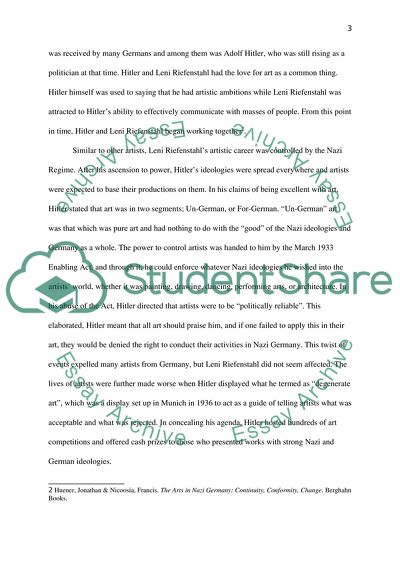Cite this document
(Leni Riefenstahl: guilty or not guilty Article Example | Topics and Well Written Essays - 2250 words, n.d.)
Leni Riefenstahl: guilty or not guilty Article Example | Topics and Well Written Essays - 2250 words. https://studentshare.org/history/1820647-is-leni-riefenstahl-guilty-or-not-guilty
Leni Riefenstahl: guilty or not guilty Article Example | Topics and Well Written Essays - 2250 words. https://studentshare.org/history/1820647-is-leni-riefenstahl-guilty-or-not-guilty
(Leni Riefenstahl: Guilty or Not Guilty Article Example | Topics and Well Written Essays - 2250 Words)
Leni Riefenstahl: Guilty or Not Guilty Article Example | Topics and Well Written Essays - 2250 Words. https://studentshare.org/history/1820647-is-leni-riefenstahl-guilty-or-not-guilty.
Leni Riefenstahl: Guilty or Not Guilty Article Example | Topics and Well Written Essays - 2250 Words. https://studentshare.org/history/1820647-is-leni-riefenstahl-guilty-or-not-guilty.
“Leni Riefenstahl: Guilty or Not Guilty Article Example | Topics and Well Written Essays - 2250 Words”. https://studentshare.org/history/1820647-is-leni-riefenstahl-guilty-or-not-guilty.


